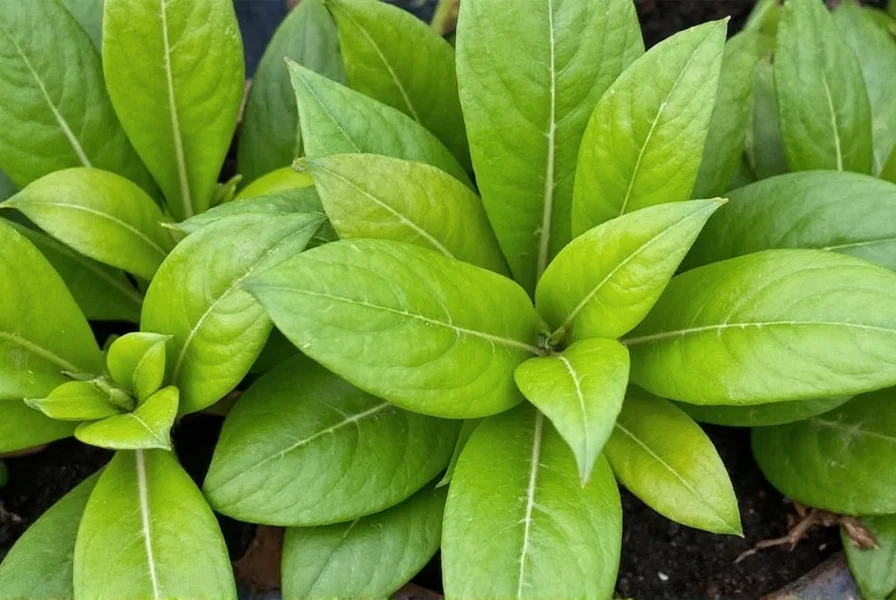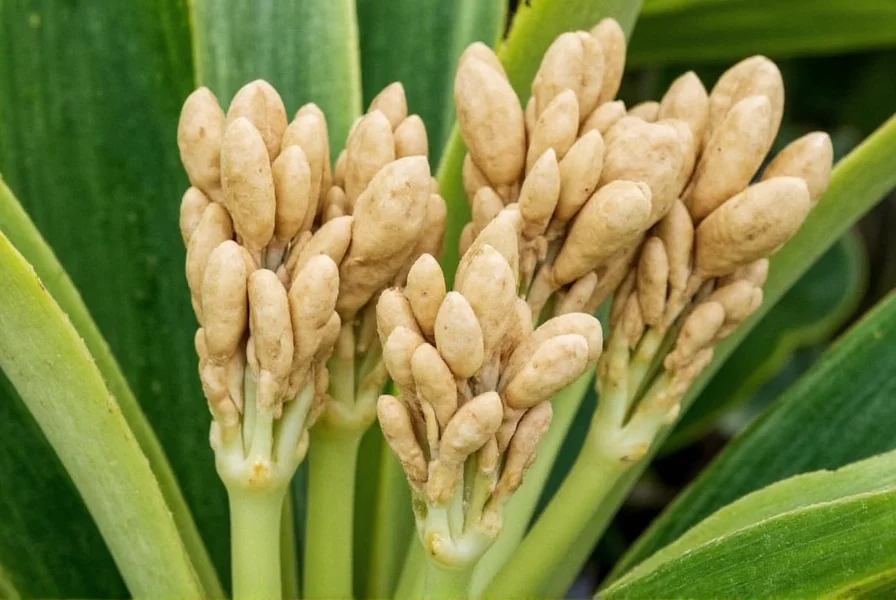Growing your own ginger at home is simpler than many gardeners realize, and it offers the satisfaction of harvesting this versatile spice straight from your garden or container. Whether you're an experienced gardener or just starting out, cultivating ginger provides both culinary rewards and an interesting botanical project. This comprehensive guide walks you through every step of the ginger-growing process with practical, field-tested advice.
Understanding Ginger as a Plant
Ginger (Zingiber officinale) isn't actually a root but a rhizome—a horizontal underground stem that produces roots and shoots. Native to Southeast Asia, ginger thrives in warm, humid conditions but can adapt to various growing environments with proper care. Unlike many garden plants, ginger grows from "seed" rhizomes rather than seeds, making propagation straightforward for home gardeners.
Selecting Quality Ginger Rhizomes
Your ginger-growing journey begins with selecting the right rhizomes:
- Freshness matters: Choose plump, firm rhizomes with smooth skin and visible eye buds (small bumps where new growth emerges)
- Avoid treated ginger: Supermarket ginger is often treated with growth inhibitors; look for organic ginger or source from a gardening supplier
- Size considerations: Larger rhizomes with multiple segments yield more plants but require more space
- Pre-sprouting: Place rhizomes in a warm, moist environment for 1-2 weeks before planting to encourage initial growth

Optimal Planting Conditions for Ginger
Ginger requires specific conditions to thrive. Understanding these factors makes all the difference between a modest harvest and an abundant yield.
Timing Your Ginger Planting
The best time to plant ginger depends on your climate:
- In tropical regions: Plant at the beginning of the rainy season
- In temperate climates: Plant in early spring after the last frost
- For indoor growing: Can be planted year-round with proper temperature control
Soil Requirements for Healthy Ginger Growth
Ginger prefers rich, well-draining soil with specific characteristics:
- pH level: Slightly acidic to neutral (5.5-6.5)
- Texture: Loamy soil amended with organic matter
- Drainage: Critical—ginger rhizomes will rot in waterlogged conditions
- Nutrient content: High in organic matter but not overly fertilized
| Ginger Growth Stage | Timeframe | Key Care Requirements |
|---|---|---|
| Initial sprouting | 2-4 weeks after planting | Keep soil consistently moist, warm temperatures (75-85°F) |
| Leaf development | 1-3 months | Partial shade, regular watering, light fertilization |
| Rhizome formation | 4-6 months | Maintain consistent moisture, increase potassium |
| Maturation | 8-10 months | Reduce watering, prepare for harvest |
Step-by-Step Ginger Planting Guide
Preparing Your Ginger Rhizomes
Before planting, divide your ginger rhizome into segments, ensuring each piece has 1-2 healthy eye buds. Allow cut surfaces to dry for 24-48 hours to prevent rotting after planting—a process called "curing" that helps protect against soil pathogens.
Planting Ginger: Container vs. Ground
Container growing: Ideal for colder climates or limited space. Use pots at least 12 inches deep with excellent drainage. A mix of potting soil, compost, and perlite creates the perfect growing medium. Place containers in areas receiving morning sun and afternoon shade.
Ground planting: In warm climates, plant directly in garden beds. Choose a location with dappled sunlight or partial shade. Prepare soil by mixing in 3-4 inches of compost and ensuring proper drainage. Plant rhizomes 2-4 inches deep with eyes facing upward.

Watering Requirements for Optimal Growth
Ginger needs consistent moisture but absolutely cannot tolerate waterlogged conditions. The "how to water ginger plants properly" question has a simple answer: keep soil evenly moist like a wrung-out sponge. During active growth (spring through summer), water 1-2 times weekly depending on conditions. Reduce watering in the fall as plants prepare for harvest.
Light and Temperature Considerations
Ginger thrives in warm conditions with specific light requirements:
- Ideal temperature range: 75-85°F (24-29°C)
- Minimum temperature: Never below 50°F (10°C)
- Light exposure: 2-5 hours of morning sun with afternoon shade
- Avoid direct, harsh afternoon sunlight which can scorch leaves
Common Ginger Growing Challenges and Solutions
Even with proper care, ginger growers may encounter these issues:
Yellowing Leaves
Cause: Overwatering, nutrient deficiency, or natural senescence
Solution: Check soil moisture, adjust watering schedule, and ensure proper drainage. If leaves yellow late in the season, it may signal natural maturation.
Rhizome Rot
Cause: Poor drainage or excessive moisture
Solution: Improve soil drainage with sand or perlite, reduce watering frequency, and ensure containers have adequate drainage holes.
Slow Growth
Cause: Insufficient warmth, poor soil nutrition, or inadequate light
Solution: Move to warmer location, apply balanced organic fertilizer, or adjust light exposure.
Harvesting Your Ginger Crop
Knowing when to harvest ginger separates successful growers from those who miss their window. Mature ginger typically takes 8-10 months to reach full size. Signs it's ready for harvest include:
- Leaves begin to yellow and die back naturally
- Stems become less rigid and start to lean
- Rhizomes feel firm and have developed their characteristic shape
To harvest, carefully dig around the plant's base, lift the entire plant, and shake off excess soil. Allow rhizomes to air dry for 2-3 days before storing in a cool, dark place. Remember that you can also practice "partial harvesting" by taking some rhizomes while leaving the plant to continue growing.
Frequently Asked Questions About Growing Ginger
Can you grow ginger indoors year-round?
Yes, ginger grows well indoors when provided with proper conditions. Use a container at least 12 inches deep with drainage holes, place in a location with bright, indirect light (east-facing windows work well), and maintain temperatures between 75-85°F. Indoor ginger requires consistent moisture—water when the top inch of soil feels dry—and benefits from increased humidity through misting or a pebble tray.
How long does it take for ginger to grow from planting to harvest?
Ginger typically requires 8-10 months to reach full maturity for harvest. You'll see initial sprouts emerging 2-4 weeks after planting, with leafy growth developing over the next 2-3 months. The critical rhizome formation happens between months 4-6, with final maturation occurring from months 8-10. In warmer climates with extended growing seasons, some gardeners report harvests as early as 6 months, but 8-10 months yields the most substantial rhizomes.
What are the best companion plants for ginger in the garden?
Ginger grows well alongside plants that share similar growing requirements. Excellent companion plants include turmeric (which has nearly identical needs), lemongrass, and other shade-tolerant herbs. In larger gardens, planting ginger beneath fruit trees that provide dappled shade creates an ideal microclimate. Avoid planting ginger near heavy feeders like corn or plants requiring full sun, as these have conflicting requirements that can compromise ginger's growth.
How do you store harvested ginger to maximize shelf life?
Properly stored ginger can last several weeks to months. After harvesting, allow rhizomes to cure for 2-3 days in a shaded, well-ventilated area. Store in a cool, dark place with high humidity (85-90%). The refrigerator's crisper drawer works well—place ginger in a paper bag with ventilation holes. For longer storage, freeze ginger (peeled or unpeeled) in airtight containers, or preserve in vinegar for culinary use. Avoid plastic bags that trap moisture and promote mold.










 浙公网安备
33010002000092号
浙公网安备
33010002000092号 浙B2-20120091-4
浙B2-20120091-4